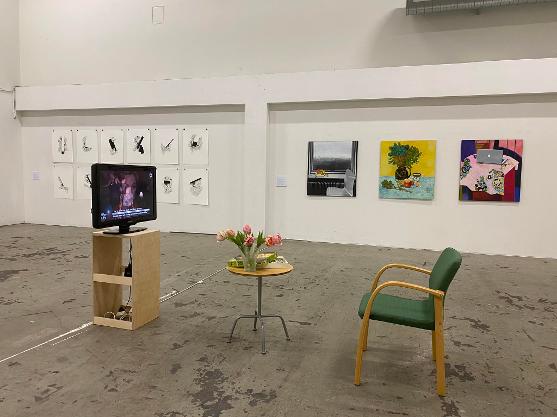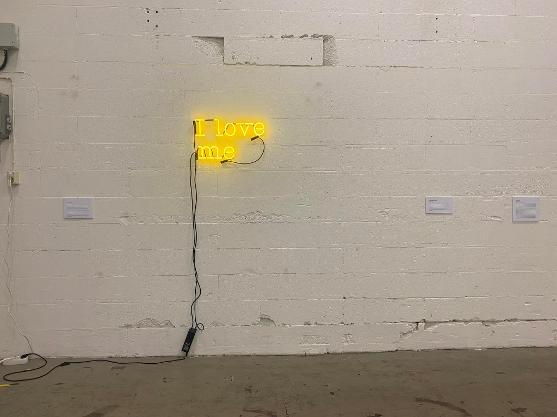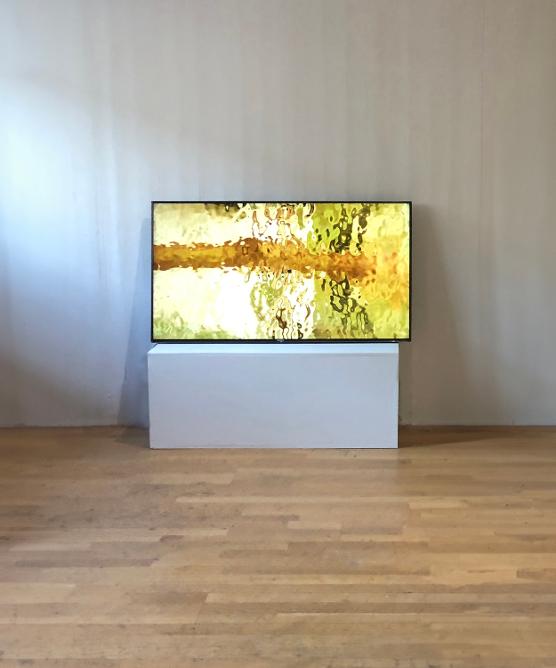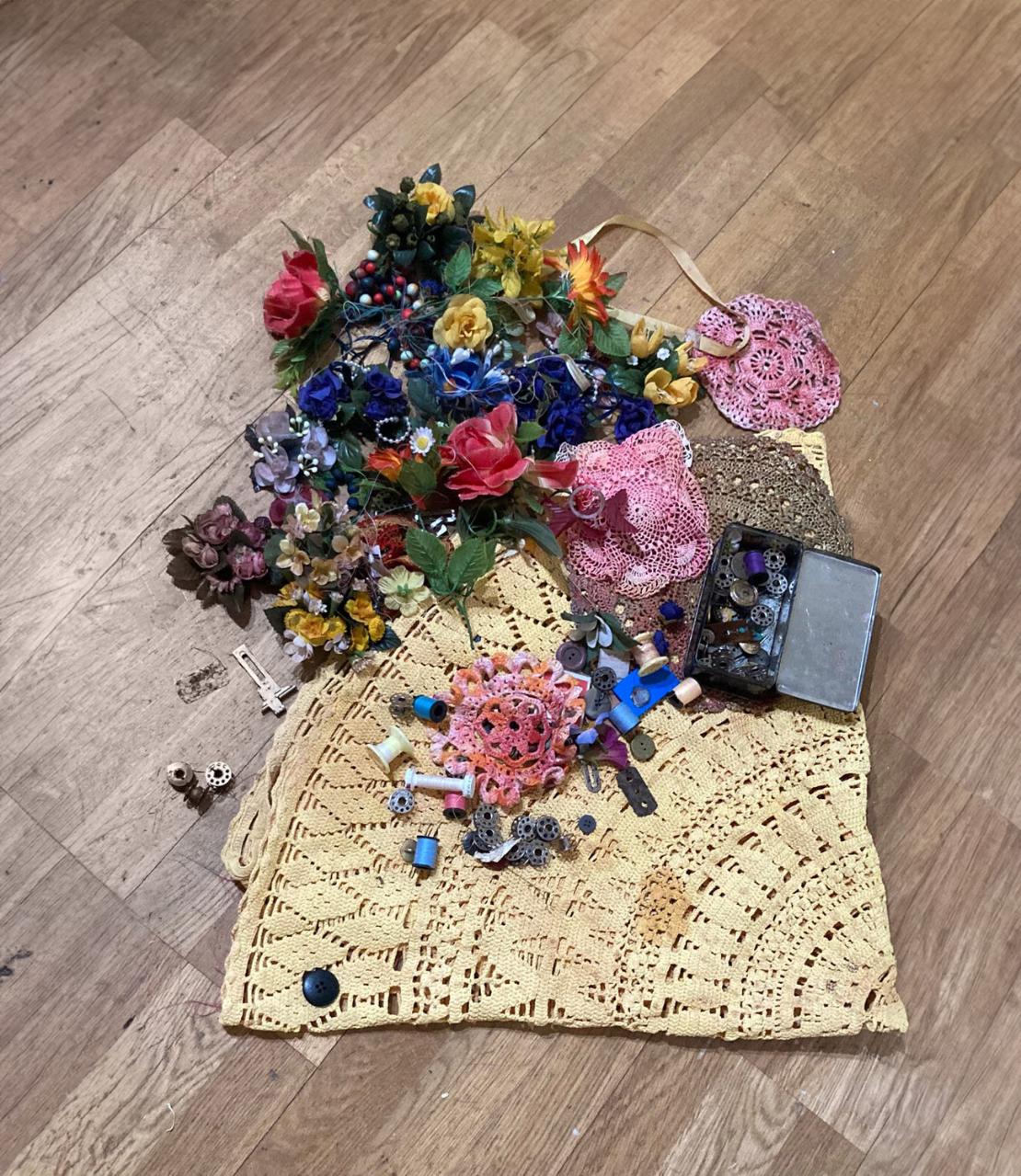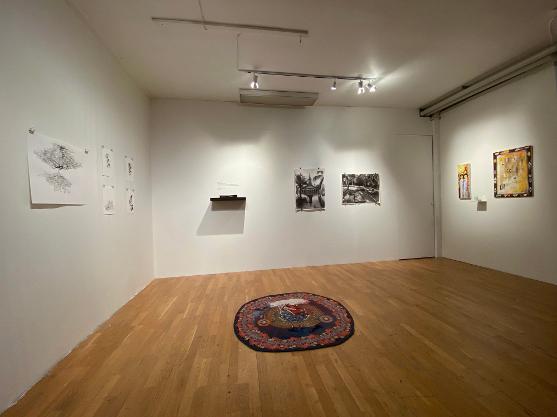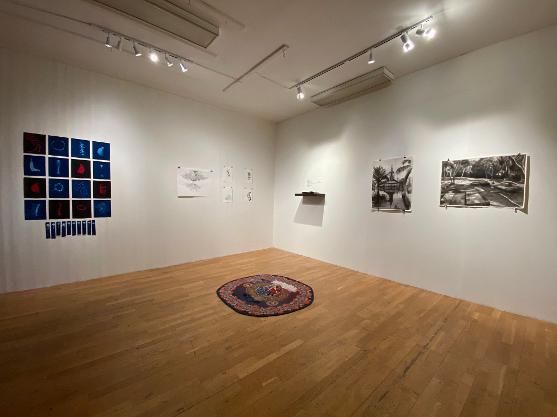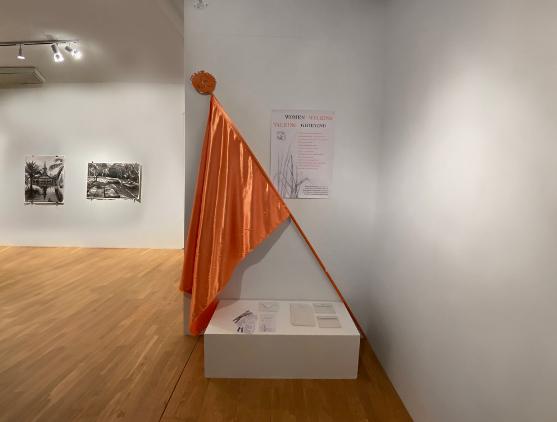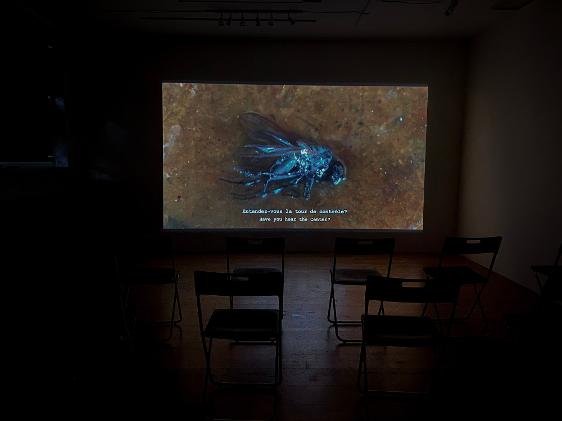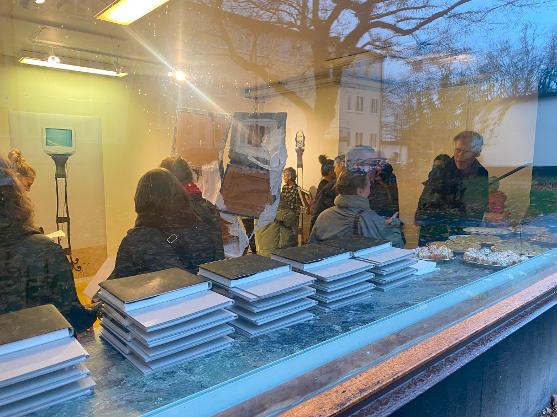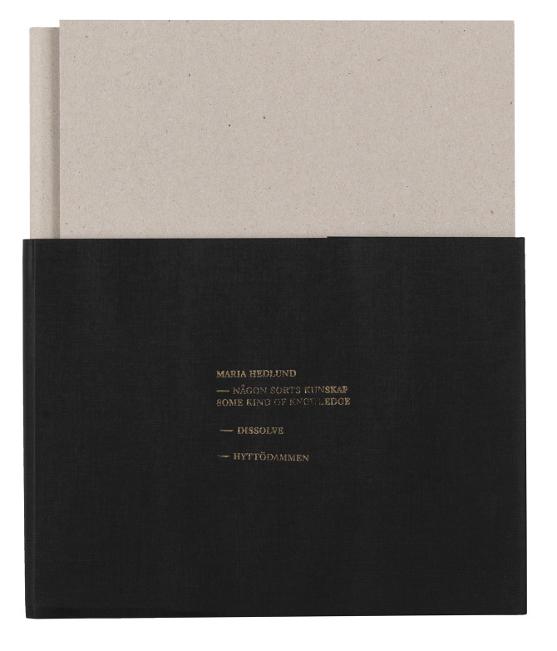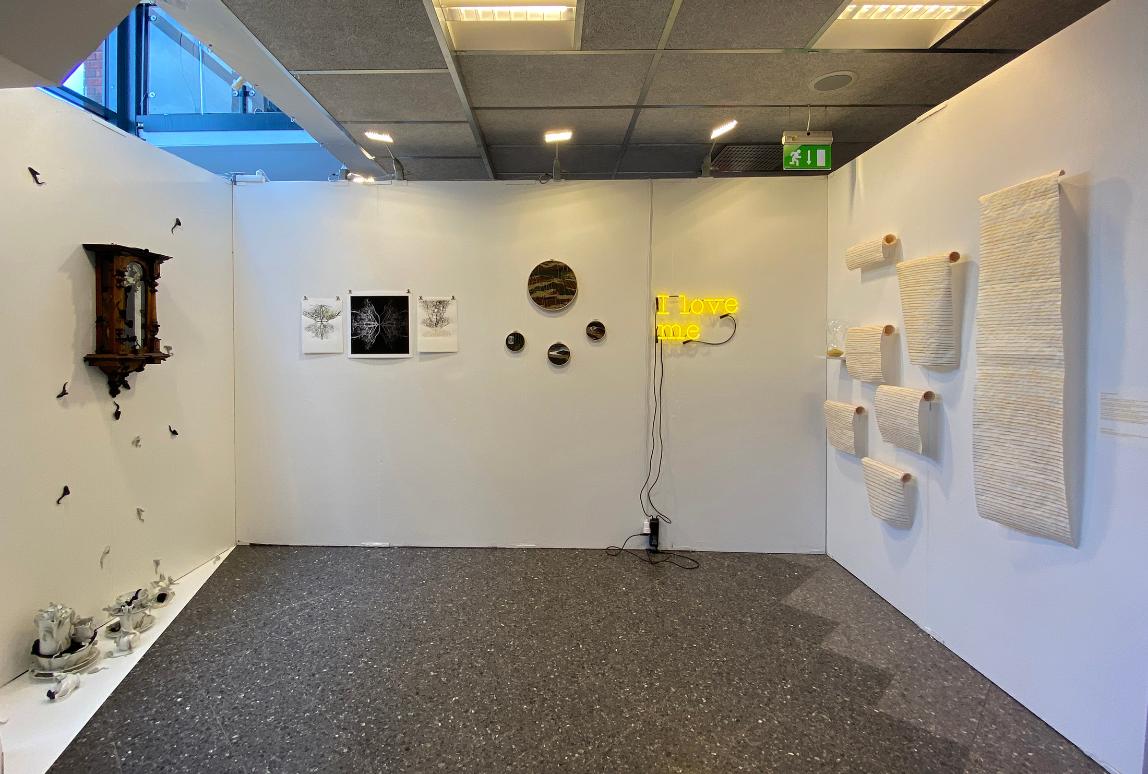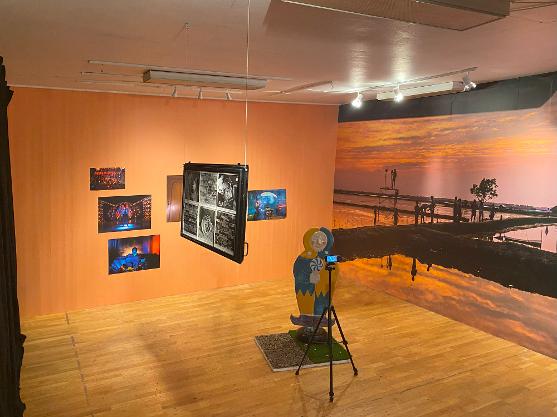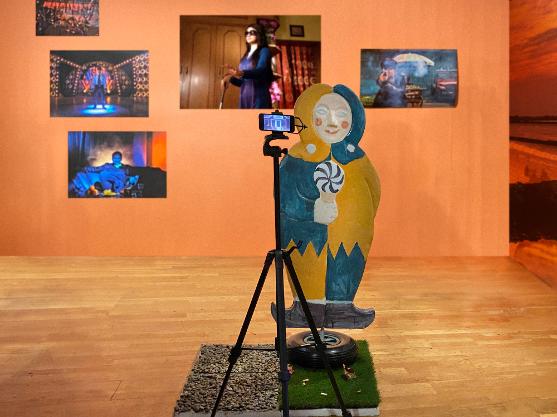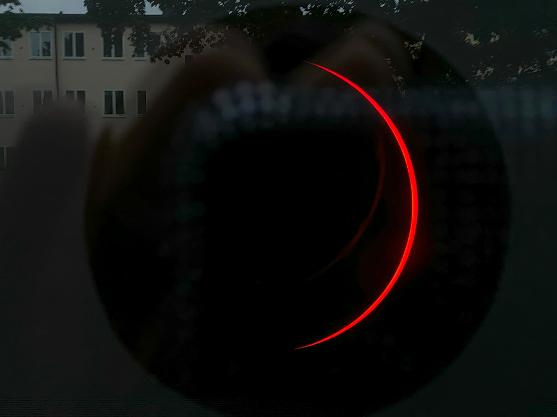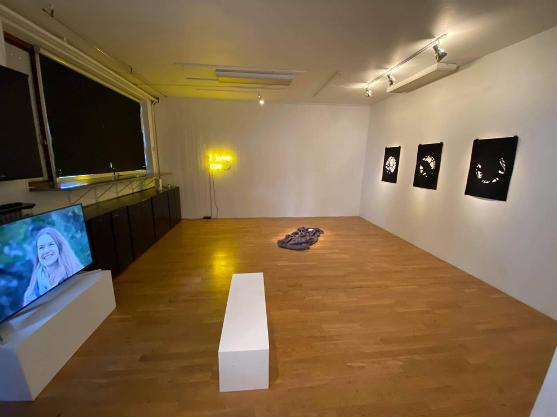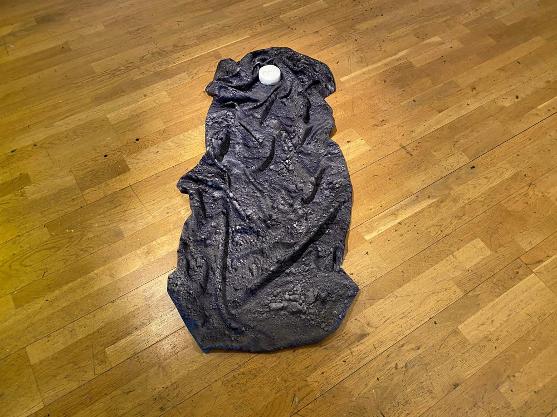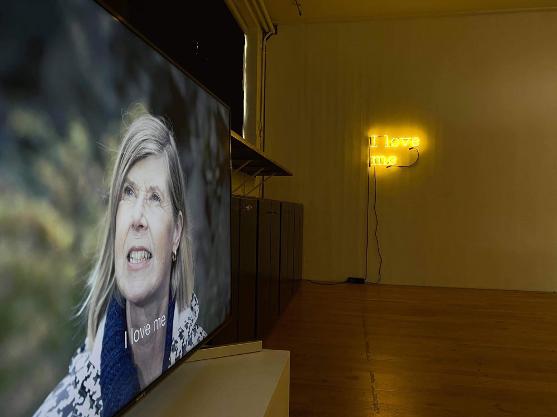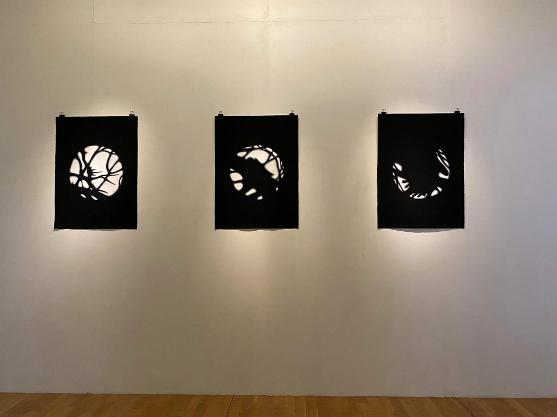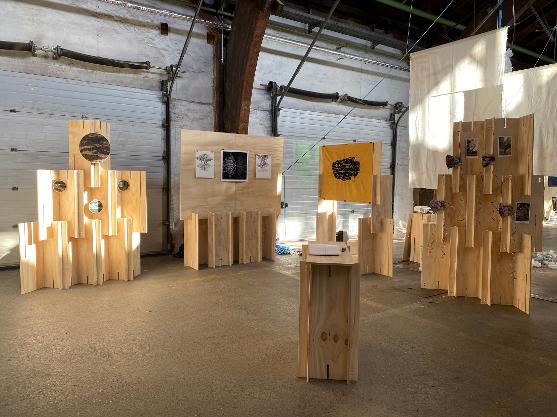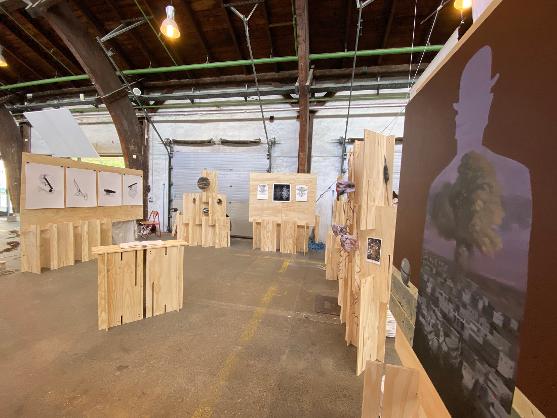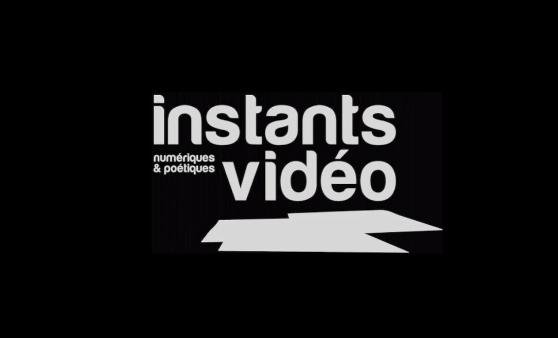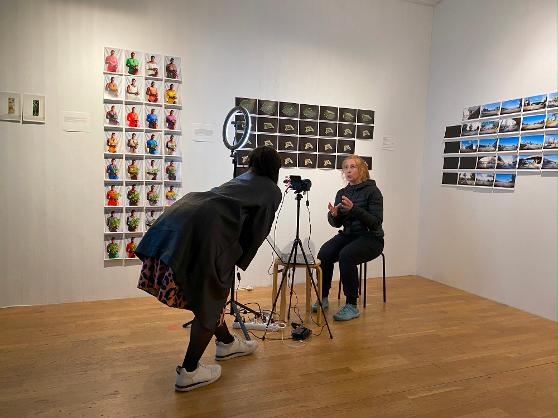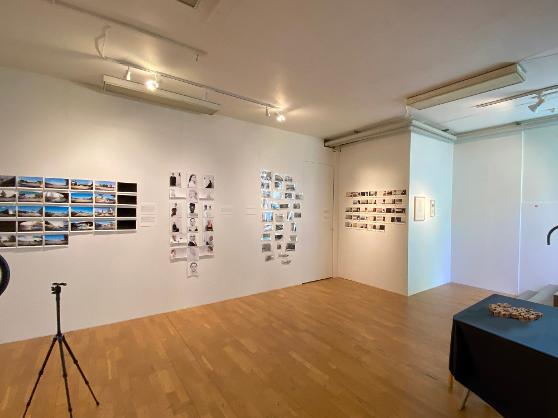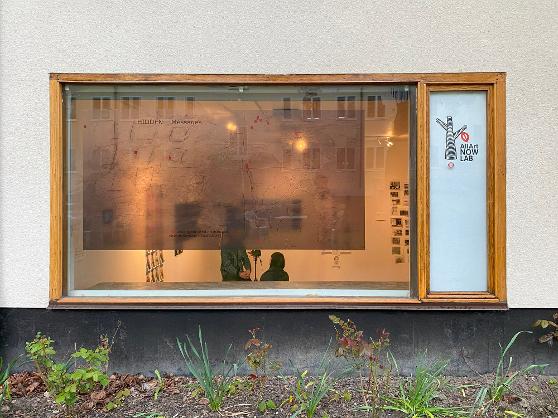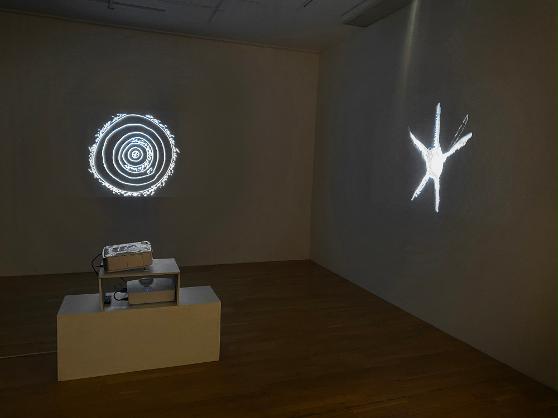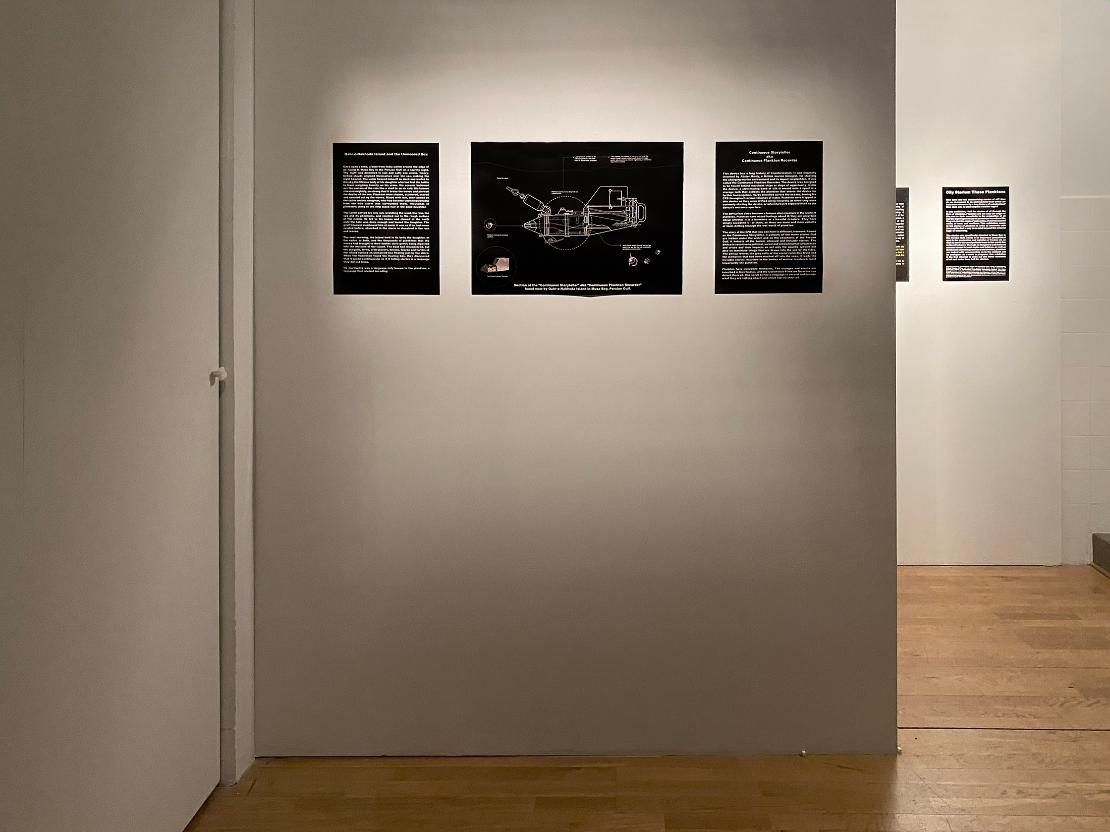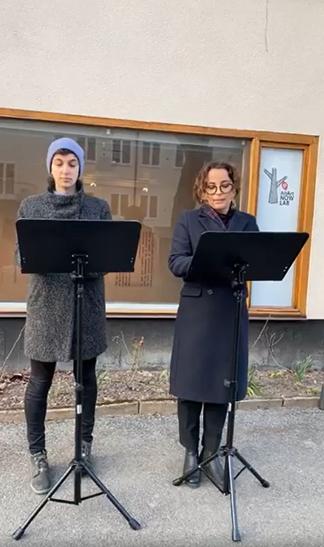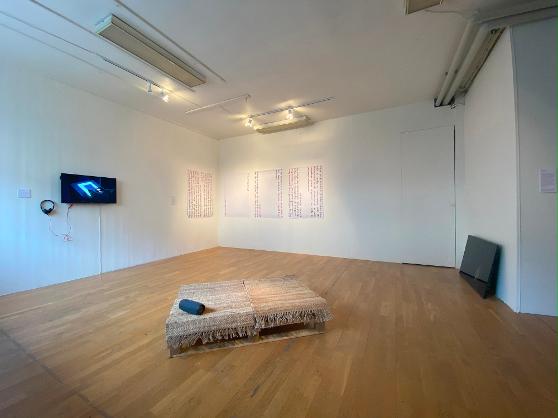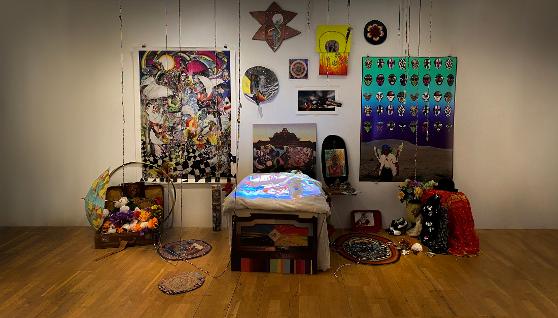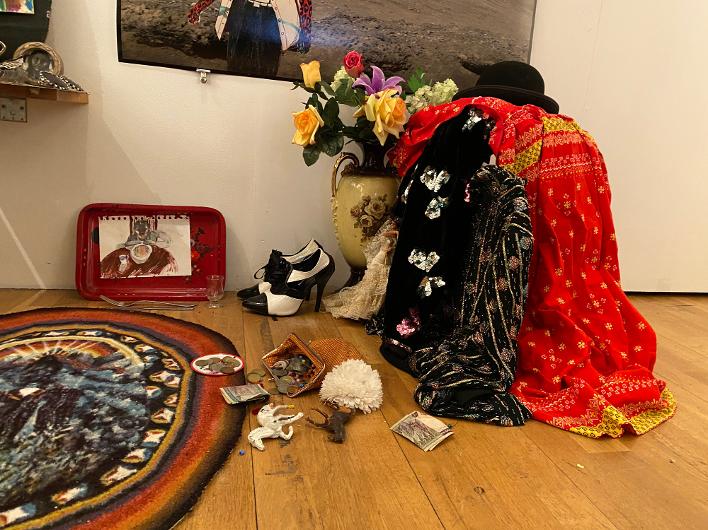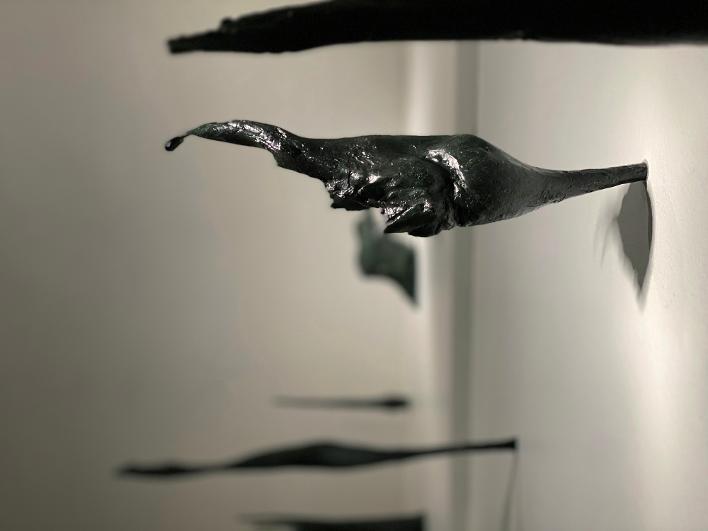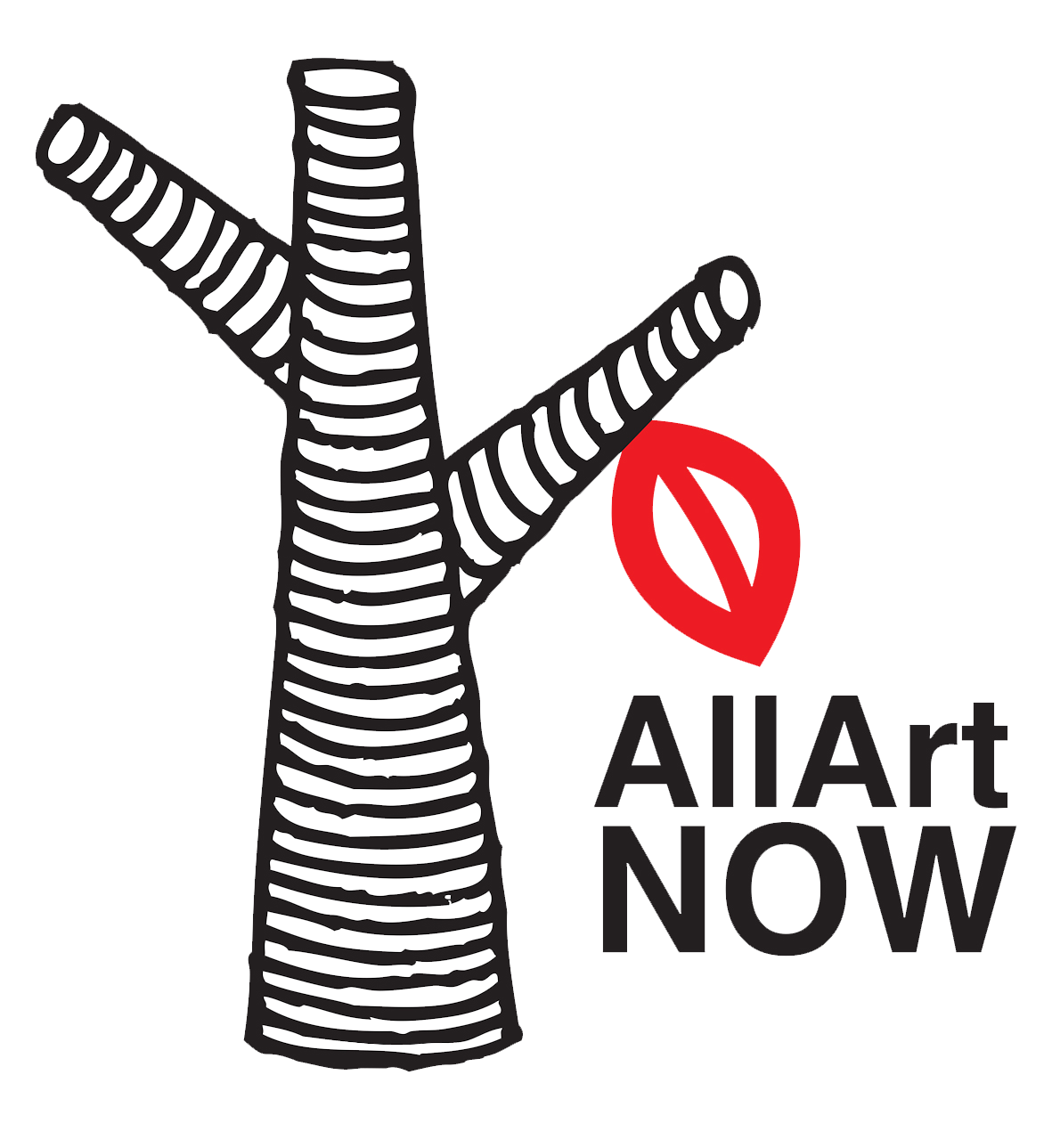Venue//Vulkano Art Gallery//Gothenburg
Artists: Connie Chappel - Diana Jabi - Felice Hapetzeder - Kasra AliKhani - Katarina Eismann
Muhammad Ali - Nikolina Stallborn - Nisrine Boukhari - Rezan Arab - Shelley Vanderbyl
Curator: Abir Boukhari
This project began in 2017 as a research exhibition titled “Something can happen beyond Expectation”.
At that time, when I started working on the concept of art as a therapeutic trajectory for artists, the world was not yet facing the universal pain of the Pandemic. Nowadays, I believe 2021 is an important time to revisit this concept.
This exhibition Beyond Expectation will consider how artists are working during a time of isolation, separation, and death and processing ideas related to the psychological impact of loneliness, loss, and grief.
Can art be a powerful tool for improving our lives? The American Art Therapy Association describes art therapy as, “an integrative mental health and human services profession that enriches the lives of individuals, families, and communities through active art-making, creative process, applied psychological theory, and human experience within a psychotherapeutic relationship.”
We as humans, use language, its descriptions, and its expressions, as a basic skill to speak about what we need, want, and face.
However, what happens when we find ourselves incapable of speaking about our hard experiences? What if our brain hides these bad experiences in our subconsciousness in an attempt to safeguard itself? Can art therapy benefit those who have survived trauma such as war, abuse, or natural disaster?
Studies show that many people with adverse physical health conditions can be greatly helped by art therapy. It also can aid people in resolving internal conflicts, improving interpersonal lives, and dealing with their problematic behaviours.
In this project, I am looking to the works of artists who I know, who I have met or spoken to. The works of these artists motivate me to question
Do artists use, foremost, art as a therapy to help themselves?
When the artist creates work in the process of expressing difficult interpersonal experience, does the viewer, who may not have the same artistic skills benefit from the resultant work? Does the artist’s vulnerability open doors for the viewer to contemplate personal experiences and struggles?
Can the artist lead the way in this process of internal discovery?
Is it possible that I, the viewer, will experience emotional relief and feel less alone and somewhat better when I see I am not the only one who faces hard experiences?.
Artists: Katarina Eismann - Munish Wadhia
Guest Curator: Eva-Lotta Holm Flach
To inherit a story is a presentation of artworks based on a conversation between three people: the artists Katarina Eismann, Munish Wadhia, and myself, Eva-Lotta Holm Flach, curator.
It's a conversation that has been going on for a couple of years and in different places; in Katarina's studio at Nytorget in Stockholm, in Munish's studio outside Gnesta in Sörmland, and at Munish's exhibition "Signs Taken for Wonders" at Art Lab Gnesta 2019, to name a few.
It is through art that our paths have crossed, but as is often the case when people meet, it also happens by chance, or when you invite someone you intuitively want to know better over a cup of coffee.
To do that doesn't need any definite intentions or concrete goals, just curiosity and desire to know more.
Art is marvelous in that respect, how it brings people together from different parts and places in society and in the world. Suddenly we are there in a room with an opportunity to talk and discover new circles together.
We share experiences in front of a painting, an installation, an unusual object, or well-known objects that are put together in a different way.
Thoughts and associations will raise that change our time frames, perspectives, and contexts. To reflect together through art is to turn the most foreign impression into something we can recognize, or vice versa.
Meeting of Minds Platform
Artists: Eden Mengisteab - Filippa Arrias - Helene Karlsson - Isabel Lofgren - Katarina Eismann
Nisrine Boukhari - Rossana Mercado.Rojas - Sandi Hilal - Sara Falkstad - Valeria Montti Colque
Curator: Abir Boukhari
In the year 2019, Sweden celebrated a hundred years of giving women the right to vote; this important date inspired me to start a project with female artists so, Meeting of Minds had come to life.
The project has a special focus on the experience of feminist visual practices concerning migration and exile as a personal experience and how you could have a transcultural background and become part of more than one society.
The first meeting was organised in Stockholm in 2019, where six female artists from different cultural backgrounds exhibited their works and exchanged their thoughts about their own experiences as female artists and how they investigated feminist-related concepts in their artworks and the subject of migration.
Initially, the second meeting was to take place in 2020 in Karlstad as a public meeting and an exhibition featuring six female artists.
But instead -due to the COVID-19 Pandemic- the artists met virtually via Zoom.
During these meetings, their discourse shifted towards the impact of isolation, separation, death, and lockdown. Moreover, how these things have had affected the outcome of their artistic work.
This assembly emphasized the importance to create an alternative space for female artists to meet and discuss their works during the Pandemic and later on.
Thus, as a continuation, we started new meetings in 2021, inviting more female artists to join us, present their works during the time of the Pandemic, and investigate how we can establish a platform for the Meeting of Minds.
As a result of these meetings, we produced documentation from 2020/2021 where the artists share segments from their Meeting of Minds.
Two exhibitions are planned to be exhibited—the first is in Stockholm at AllArtNowLab as it is presented to you these days, and the second show will be in 2022 at Konstframjandet Varmland in Karlstad.
Artists: Úrsula San Cristóbal - Robin Klengel, Leonhard Müllner, Michael Stumpf - Victor Orozco Ramirez - Thomas Renoldner
Guest Curator: Gabriel V. Soucheyre
Every year, since 1986, VIDEOFORMES International Digital Arts festival shows different forms of art, mostly hybrid, i.e. more traditional forms that mix with digital media : live shows, Virtual Reality, installations (sculptures and/or visual arts) and videos. To meet VIEOFORMES criteria, the works must be innovative and sensible.
In this category, a selection is made among hundreds of videos sent from every continent.
Then they are submitted to an international professional jury an a university students jury who deliver their own awards.
The program we propose here testifies of the creativity of artists today, either in forms an/or contents.
With Dark Sun, Úrsula San Cristóbal successfully reaches a very sensitive state of poetry, almost magical.
In How to Disappear Robin Klengel, Leonhard Müllner, Michael Stumpf, three Austrian artists create a wonderful and sensible machinima, a video made after the structure of a video game, the topic of which is video games but more crucially freedom in a digitalised world.
With Revolykus, Victor Orozco Ramirez deals with the subject of migrants in a sensitive way, another topical issue for our societies.
Don’t Know What by Thomas Renoldner may look refreshing, or sincere, it can also be seen as a dadaist or Fluxus statement, showing the absurdity of our world.
These videos have been produced just before or during the first lock-down, but surely are looked at in a period deeply marked by the pandemics, therefore they may appear more percussive.
Maria Hedlund: Some kind of knowledge, Dissolve, Hyttödammen
Book Release: Maria Hedlund
Artists: Maria Hedlund - Sahar Al-Khateeb
Guest Curator: Renée Padt
Things, the inanimate materials surrounding us in our home, they usually outlive us in time, transforming the mundane into material evidence. But what histories lie within or beyond them? Is the relation each thing carries only just to itself? What memory does a thing hold?
"Memory of Things" presents two new works, Re-Construction, an installation by Sahar Al-khateeb and Some kind of knowledge: Sketches in color (2021), a photographic installation by Maria Hedlund, two artists who in their work share a fascination, or even a fixation, with things. As a metaphor for a state of in-betweenness, of displacement or relocation, what’s left behind and broken connections; as a reflection on the transience of life.
Ordinary familiar things, such as a chair, a TV, or a pot plant, are the protagonists of the works. Discarded, not having passed the test of time, they reveal the cracks and traces of time.
Portrayed as somewhat distorted domestic scenes, void of people like uncanny still lives, they resonate with decay or loss as much as they echo the melancholy or beauty of impermanence. As modern-day vanitas, depicting left-overs of the daily life of unknown people, they take on new meaning and become sites of memory and forgetfulness, where time or place do not seem to exist.
Memory, after all, is linear nor static, there is always more than one narrative, multiple perceptions, and even more inconsistencies.
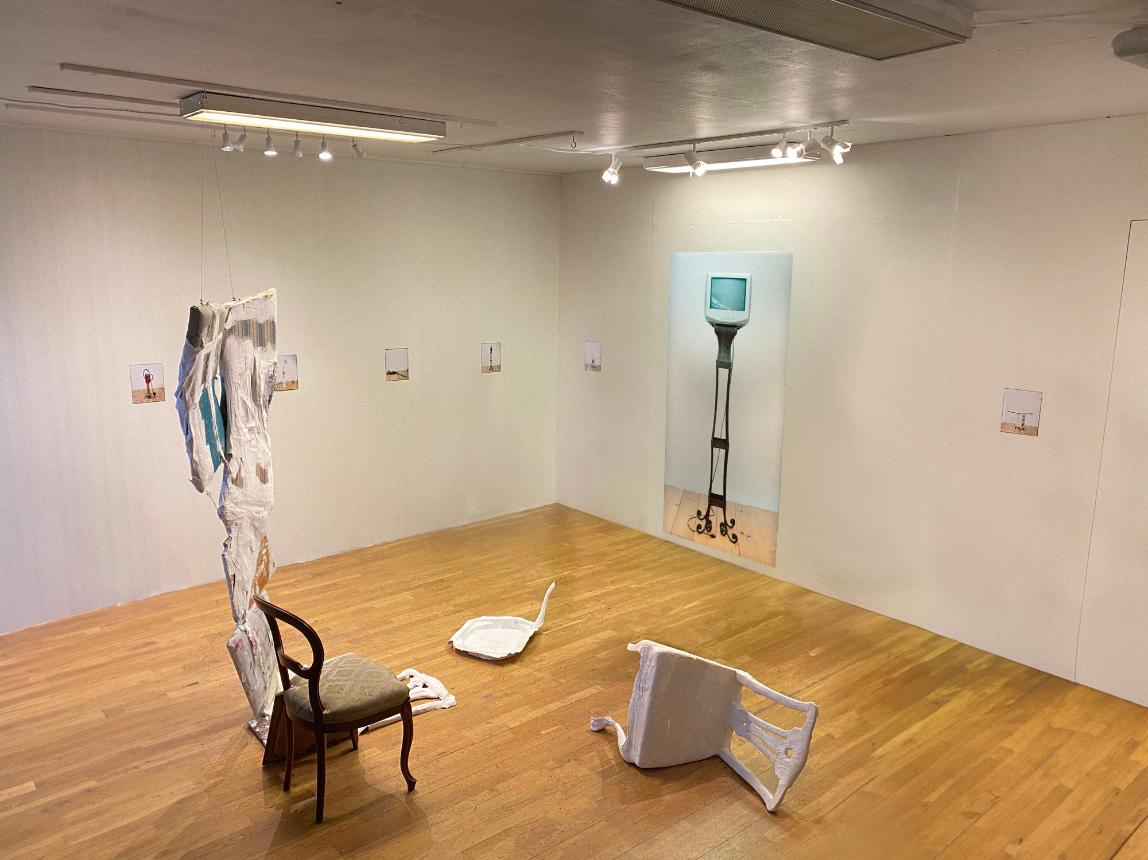
Venue//Supermarket Art Fair//Stockholm
Artists: Felice Hapetzeder - Katarina Eismann - Muhammad Ali - Nikolina Stallborn - Nisrine Boukhari - Rezan Arab
Video program: Eden Mengisteab - Filippa Arrias - Helene Karlsson - Nisrine Boukhari - Sandi Hilal - Sara Falkstad
Curator: Abir Boukhari
In the wake of Covid19, the world turned upside-down and we all expressed panic in several behaviours.
Daily life slowed down, we isolated ourselves and we learned the meaning of social distance, and lockdown.
When the pandemic started, we thought it might attacks the world for a few days or few weeks, but later, we discovered that this would be for months and
maybe years.
The urgency of continuing our lives originated many ideas and attempts at all levels.
During the years 2020-2021, we lived the experience of being between the digital and the physical world and we found many new ways to communicate
together For this year, we selected few artworks from several projects that we produced in AllArtNow during this period.
Close Encounters of the Fictive Kind
Artists: Faiham Ebna Sharif - Kira Carpelan - Agnieszka Abramowicz - Queenning Zhao - Kasra Seyed Alikhani
Guest curators: Ashik & Koshik Zaman (C-print)
For us as curators, ’Close Encounters of the Fictive Kind’ is an exhibition which marks a throwback to school years and an early (escapist) love for cinema that preceded a passion for contemporary art. On another note, already when setting sail to C-print as an art platform there was an interest to make room for contemporary art from Bangladesh which is our parents’ origin of birth. Consequently, the exhibition which can be passed as a homage to cinema saw its starting point in the Bangladeshi film industry; something most people, including us, have had very little exposure to. The exhibition however suggests cinema as a universal phenomenon whose tropes, clichés, genre conventions, and plot devices make for a shared and commonly understood “language”.
Faiham Ebna Sharif’s long-term and extensive ongoing body of work ’Fantasy Is More Filmic Than Fictional Bangladesh Film Industry’ blurs the boundaries between fiction and reality with images in the exhibition that while appearing like still frames from films are essentially documentary, deriving from the many film sets he’s had the access to visit and monitor over the years. The presentation takes single and singular images out of their context into the semblance of an interconnected whole: a narrative that is easily and instantly recognizable.
Kira Carpelan’s video ’The Woman Without Qualities’ presents as a pastisch of Western film canon starring Alexandra Dahlström. It’s informed by a research project about the portrayal of women in cinema for which a great number of films were examined. It consists of 14 “stock” scenes from film history. In the video a dramatic curve has been “faked” pretending to show plot movement and character development. But since the woman on view is by herself not much happens.
Agnieszka Abramowicz too explores gender roles with her collage-based ’Cutting Roles’ which departs from society’s failure to shift dated gender roles and codes, suggesting that they have been reproduced and cemented so deeply through cinema to such extent that cutting through them is an intricate web of deceit.
Queenning Zhao’s light installation ’Eclipse’ is a reminder of how natural phenomena, weather conditions and light have throughout the history of cinema been part of its “language” and a tool to convey tension, mood and shifts in a narrative.
Kasra Seyed Alikhani’s meta oriented spatial installation relates directly to a feature-length film project that he is in the process of developing with dual identities as both filmmaker and artist. The installation presents a scenography from a road movie to be made which will see a fictive Swedish rest stop as its scene. The rest stop is a genre-bending set and plot device that is both a generic and desolate site. Because intentions are never to stay, anything can end up happening, making it particularly of interest in its capacity of stressing the imagination about its significance.
Ashik & Koshik Zaman (C-print)
Artist: Anna Ill - Anna López Luna - Chantal Rousseau - Felice Hapetzeder - Mounir Gouri - Muhammad Ali - Tracy Peters
Curator: Abir Boukhari
The art residency acts as a mechanism to encourage and support intellectuals, artists, and cultural workers in the process of their artistic research and creative development. It fosters sustainability for the artistic body of ideas in an inclusive open society. The pandemic crisis illuminates the value of creativity and the ways that new ideas can be generated in uncertain times.
The Strategy for many art residencies have been implemented through the virtual exchanging of artistic experience and many questions have been raised about the digital residency. Would it be more applicable in the future? Will we develop and adapt new formats for the art residency?
We began to explore the virtual residency format in 2020, and the program will continue with the second edition in 2021. Three events will be organized during the year, in three cities, Winnipeg, Stockholm, and Barcelona. The residency process unfolded through webinars, first proposing the project, then giving the artists time to meet, discuss the concept, produce work, and finally exhibit in venues in Winnipeg, Barcelona, and Stockholm.
The Albert Camus’s quotation inspired our concept for this version of the residency “Until now I always felt a stranger in this town, and that I’d no concern with you people. But now that I’ve seen what I have seen, I know that I belong here whether I want it or not. This business is everybody’s business.” The Plague, p.209
In the novel, the narrator is a stranger who finds himself separated from his own home and his wife because of the Plague which invaded Oran City. First, he is looking for a way to escape the city but later on, he decides to stay to support the others in solidarity.
This collective fight against the pandemic leads to equality and belonging, where all people experience a form of exile, live in isolation, separate from their beloved, and fight against death; we are all prisoners, sharing the fear and the uncertainties of the moment.
Do we understand the plague as a collective disaster that we all must fight against in support of each other? Or, do we experience distress as individuals and believe that one’s own pain is unique and separate? Does this encourage solidarity and compassion between humans or is it a reason to blame each other?
For this residency, I invited seven artists to have online meetings using the selected quotation as a starting point, to discuss and share their thoughts, and create work that reflects on the current situation in relation to their own experience.
Abir Boukhari, Stockholm, 2021
Something Can Happen Beyond Expectation
Venue//Vulkano Art Gallery//Århus
Artists: Connie Chappel - Diana Jabi - Katarina Eismann - Muhammad Ali - Nikolina Stallborn - Nisrine Boukhari - Rezan Arab - Shelley Vanderbyl
Curator: Abir Boukhari
We humans use language, its descriptions, and its expressions, as a basic skill to speak about what we need, want, and what we face. However, what happens when we find ourselves incapable of speaking about our hard experiences? What if our brain hides these bad experiences in our subconsciousness in an attempt to safeguard itself? Art therapy benefits individuals who have survived trauma resulting from war, abuse or natural disaster.
People with adverse physical health conditions are greatly helped by art therapy. It also aids people in resolving their internal conflicts, improving their interpersonal lives and dealing with their problematic behaviours.
In my project, I am looking to the works of some artists that I know, who I have met or spoken to. The works of these artists motivate me to think: Do artists generally use art as a therapy to help themselves first?
From the last Magmart Festival/Italy
Artists: Andreas Mares - Antonello Matarazzo - Marie Suzannne Nourdin - Roger Horn - Tanja Balac
Guest curator: Enrico Tomaselli/Magmart Festival/Italy
Directing an international video art festival, which has been going on for over 15 years now, means first of all having an open window on the world of the moving image, and therefore having the opportunity to observe its evolution and changes.
Follow artistic paths that are consolidated and mature over time, but also discover new talents, perhaps destined to be the confirmations of tomorrow.
This observation in progress turns out to be particularly fertile when - outside the festival - one is called to make curatorial choices, and one finds oneself, in fact, putting together established and non-established artists.
For this selection, which collects 11 videos chosen from among those awarded at the twelfth edition of Magmart, artists are known to the public of the festivals - such as Isabel Perez del Pulgar, Ursula San Cristobal, Jerry King Musser ... - are joined by others less known - such as Gabriela Morawetz, Eta Dahlia, Sebastian Wiedemann ...
The eleven works are in fact very different, both in technique and in compositional style, and reflect in this the different personalities of the artists, their different sensibilities.
But, in this discrepancy, and at the same time in the uniqueness of the media used, lies one of the extraordinary attractiveness of video art, the most contemporary of the visual arts. An art form that speaks the most widespread language in the world today, but that knows how to use it in ways very different from the usual ones. Video art dialogues with cinema and television, with advertising and with music video clips, in continuous mutual contamination, but what it gives us back is always absolutely original.
Enjoy it!
Death, life is stalking you!
Les Instants festival/Marseilles
Artists: Pierre Carrelet - Heidi Hörsturz - Neno Belchev - Katie Colosimo - Tania Haberland - Pelagia Gadallah - Marcos Bonisson+Khalil Charif
Guest curator: Marc Mercier/Les Instants Festival-Marseilles
The program presents an overflowing, passionate gesture that decides what happens to your own body.
Only passion is able to defy death and stupidity that lies in the eyes, obscene, of the others when looking at our bodies.
What gives each of us a sense of freedom?
Forgetting that we are being watched, only then we can overcome the limitations that the society built around us or even the clothes which hide the most private parts of our body.
Our body likes the freedom that guide us to tomorrow that will not be a disenchantment anymore.
Venue//Alma Löv Museum//Sunne_Sweden
Artists: Eden Mengisteab - Filippa Arrias - Helene Karlsson - Nisrine Boukhari - Sandi Hilal - Sara Falkstad
Curator: Abir Boukhari
Originally, the project was to take place in Karlstad at Konstframjandet Varmland as a public meeting and exhibition featuring six female artists.
Each artist planned to investigate feminist concepts in their artistic practice as well as the subject of migration.
Instead, due to the COVID-19 pandemic, the artists met virtually via Zoom.
During these meetings their discourse shifted towards the impact death, isolation, separation, and lockdown have had on the outcome of their artistic work.
As a result of these meetings, we produced short documentation where artists are sharing with you segments from Meeting of Minds.
The Blue Was More Distant Than The Sky
Venue//Raum_fuer_Raum//Düsseldorf_Germany
Arist: Nisrine Boukhari
Curator: Rainer Junghanns
Venue//The Comox Valley Art Gallery//Canada
Artists: Shelley Vanderbyl - Nisrine Boukhari - Alfredo De Stefano - Anne Steves
Curators: Abir Boukhari - Denise Lawson - Angela Somerset
Thinking Through a New World
curatorial reflection by Abir Boukhari
In the wake of the pandemic, the world experienced three big fears: fear of death, getting sick and being isolated. Daily life slowed down, work was interrupted, human beings were locked down while animals and birds felt free to take the city, the fish came back to the canal in Venice, and we faced the feeling of being captives in our places.
When COVID-19 started, we thought we might be in this upside-down world for a few days or few weeks, but later, we discovered that this would be for months and maybe years.
We learned the meaning of “social distance” instead of “gathering together” and how to isolate ourselves from our beloveds to protect them; soon after, we started to miss them and long for our social life. We stopped our work and cancelled or postponed plans to avoid spreading the virus. Thus, we began to confront anxiety, stress, depression and uncertainties. The urgency of continuing our lives during the pandemic accelerated and emphasized the existence of the cyber age as a new world to communicate in, work at, and explore further.
We questioned the various meanings, aesthetics and functions of the public sphere regarding real and virtual: Are we going to consider cyberspace as the new public space that takes on a prominent role in our daily lives at home? How does the Internet inhabit the public sphere?
Digital and physical experiences in the art sector intersect during contingent times. Referring to my background, being originally from Syria, the digital world is almost the only way to communicate with the outside world because of war and isolation; but this time, the whole world faces the reality of becoming isolated and the need to rely upon the digital world. Hence it is a war, but of a different kind.
In this program, we lived the experience of being between the digital and the physical world: In the art residency at the Comox Valley Art Gallery, we had two artists who had their studios, and they were physically there. The other two artists joined the art residency virtually, got involved by their thoughts, inspired through the process, communicated with their fellow artists, and tried to imagine an alternative way of feeling as if they were physically in the space. The art residency was a challenge for us as curators about thinking, working and collaborating in a new world—the cyber world.
Would it be feasible for the three of us to co-curate one project together? What are the criteria for building the best collaboration? How can we share the space when we are unequal in our existence, as some of us are fully involved in the space, while the others are working to share their thoughts and inputs virtually in the space through relying upon the others who have their existence there? How could the artists be inspired from the moment to describe challenges and create a vision about the future?
The program was running during the year 2021 in Comox Valley Art Gallery and in cyberspace, where we had several meetings and shared our thoughts from our residence countries: Canada, Austria, Mexico and Sweden.
The art residency was completed by creating an exhibition at Comox Valley Art gallery. This exhibition was installed, co-curated in collaboration between two groups; the first is on-site and has full access to space and other resources. The second group was involved virtually; as an attempt of a new method to be examined on what it means to be in virtual residency, share the space and think together of a new world in the state of becoming.
As If I Was There / As If You Were Here
curatorial reflection by Denise Lawson+Angela Somerset
Offsite_Onsite celebrates the resilience of artists, curators and producers who have contributed generously to a research and presentation program during a time of unprecedented world-wide uncertainty.
Collectively our awareness was heightened to the challenges of being held apart as the artists, curators and collaborators came together. Our relational practice was sustained through virtual and socially distanced in-person meetings. This interstitial way of connecting allowed for new research and creation opportunities to erupt as we took time for deep inquiry, collaborative production, and engagement of the wider community.
As we connected, considered, and navigated the terrain of separation, gallery spaces were adapted, windows became portals, media screens and internet platforms were enlivened, and installation projects situated offsite and onsite. These portals became access points to lived experiences, truth telling, realms of time, notions of shared space, and to places both near and far.
The resulting presentation of media and material installations through the exhibition Under One Sky situated onsite at CVAG and the Offsite_Onsite installation projects that are both presented in the gallery’s peripheral spaces, at sites in the Comox Valley community and further afield – as far away as Newfoundland, offer access points to the states of mind-wandering, loneliness, interception of the unexpected, and the possibilities for relationships with people and places both near and far.
When we look back in time we see that the tender rooting of this offsite and onsite convergent program began with a conversation during a studio visit in 2019 that we had with artist Shelley Vanderbyl. During this visit ideas evolved for an multi-faceted project centring on the dynamics of ‘help’. Further intersections and resonances were nuturered stemming from art exchanges that had begun in Winnipeg and Sweden between Abir Boukhari, Shelley Vanderbyl and Nisrine Boukhari. As a result, Shelley provided the conduit between us as collaborative curators.
The collaborating curatorial work for the overarching program OFFSITE_ONSITE began in 2020. There was a recognition that we would need to conceptualize a hybrid way of supporting artists in research, creation and presentation during a time of COVID-19 restrictions. This instigated another layer of conversation centred on strategies for collaboration and responsive exchange during a time of isolation – the priority was to enable us to work around and work through the challenges we were faced with to connect and work together in order to continue producing art and art exhibitions both here and in places far away. We entered virtual spaces and where possible physical spaces in person, so that the work of the participating artists, co-curators and the gallery might continue. During the year preceding this exhibition artists and curators came together in relational practice that supported research, development and production of work for presentation. Over spans of distance and time we became known to one another through written exchanges and recurring virtual and in-person conversations. The artists engaged in residencies that supported their explorations, dialogue, and experimentation. The public was engaged in virtual workshops that contributed to research. Onsite project development and installation through collaborations, both in person and over long distances, was undertaken. Invitations were extended and accepted for community partner participation of the offsite installation presentations.
Under One Sky exhibition
The gallery exhibition is open to the public / and it is between these four walls / under one sky, that we situate ourselves. We orientate ourselves to the room, inhabited by the artists through their work. Primarily occupying the walls, the work faces inward leaving ample space for the viewer to encounter the artists’ projects and the conversations instigated between works, all the while socially distance themselves. Masked and sanitized we enter, map in hand, wireless headphones cued. CVAG’s convergent programming is a way of working from ideation through to dissemination.
Wayfinding, in a counterclockwise direction, the exhibition is an accumulation of material elements, video and sound components components including:
Shelly Vanderbyl ‘s 2021 installed work is comprised of Stacked Painting Installation which includes Fire Break, Giving the Grease to the Wheel that Never Squeaks, Accidental Signal Fire, and Help; as well as Prescribed Fire – a single-channel video projection loop, made in collaboration with CVAG Productions during her residency. For this work, a wireless headset is utilized to listen to the synchronized soundscape.
Next is Nisrine Boukhari’s 2021 video installation The Blue Was More Distant than the Sky. In this “theatre for one”, as described by the artist, a single viewer is invited to sit in a blue chair oriented frontally to a large video screen mounted on a wall painted deep blue. Sitting in a matching blue armchair, the synchronized audio track can be heard using the wireless headset. This work was made in collaboration with Havremagasinet LansKonsthall.
Continuing through the gallery we encounter a 2021 video diptych by artist Anne Steves. On the left side of the diptych is Contact, a 26 min. single-channel video compiling extensive documentation of a community incubator collaboration entitled a sense of abandon / but not a lack of discipline. This video project formed the outward facing skin of Anne’s residency at CVAG – running as a loop 24/7 in the large window over the past few months, while she inhabited the main floor Gather Place. On the right side, the other single-channel work Tracing reveals the creation mapping and preparatory work for this new work. Both of these video works were created in collaboration with CVAG Productions.
Finally we arrive at the fourth wall of the gallery that holds the single-channel video loop Constellation, by artist Alfredo De Stefano. The large-scale projection of this work fills the wall and the audio sound scape is played live in the gallery as a means of encompassing the viewer in an expansive experience – much like looking at the night sky as the “stars look at us from the black night”.
This program undertaking has been conducted virtually, physically, onsite, and offsite, as a means of creating a container for consideration of individual projects and the connections between artistic practices. Several satellite installation projects are visible onsite and offsite. These satellite installation projects include:
Alfredo De Stefano’s single-channel video loops
Meteoritos – running in CVAG’s Foyer Community Gallery /
Visit My Studio / Visita Mi Estudio – available online via QR code, and
Dinosaur co-presented at the Courtenay and District Museum & Palaeontology Centre
Fire Safety / Prescribed Fire are video works documenting Shelley Vanderbyl’s residency and performative paintings, and can be seen 24/7 in the lower level 6th Street window spaces @ the Comox Valley Art Gallery. These works were made as a collaboration between Shelley and CVAG Productions
The Light that Gets Lost is a site-responsive installation by Nisrine Boukhari also visible 24/7 in the lower level 6th Street window spaces @ the Comox Valley Art Gallery. The production of the installation space was realized as an undertaking between Nisrine and CVAG Productions.
Spread – Anne Steves has produced site installations at CVAG as part of her residency, in Cumberland BC and in various locations across western Newfoundland Canada, in collaboration with artist Tangiene Martin O’Hara

Artists: Jenevieve Aken - Maho Maeda - Maximo Corvalan Pincheira - Miryeon Kim
Nisrine Boukhari - Rainer Junghanns - Setsuko Fukushima - Silke Manz - Yukako Ando
Guest Curator: Rainer Junghanns
Contemporary Witnesses from Contemporary Artists during Lockdown 2020 & one SPECIAL. Nine artists from all over the world will witness the lockdown in 2020. They are artistically documenting their life situation in their own conflicts.
Global artistic identities find themselves in the personal space with the idea / with the hope of experiencing new encounters, making globality tangible.
The artist and curator Rainer Junghanns were influenced by March 2020. He began to keep a photographic and artistic diary about this new situation. Then he corresponds with colleagues from all over the world in order to “win them over as contemporary witnesses”.
Venue//PLATFORM centre//Winnipeg_Canada
Artists: Anna Ill - Anna López Luna - Chantal Rousseau - Felice Hapetzeder - Mounir Gouri - Muhammad Ali - Tracy Peters
Curator: Abir Boukhari
The art residency acts as a mechanism to encourage and support intellectuals, artists, and cultural workers in the process of their artistic research and creative development. It fosters sustainability for the artistic body of ideas in an inclusive open society. The pandemic crisis illuminates the value of creativity, and the ways that new ideas can be generated in uncertain times.
The Strategy for many art residencies have been implemented through the virtual exchanging of artistic experience and many questions have been raised about the digital residency. Would it be more applicable in the future? Will we develop and adapt new formats for the art residency?
We began to explore the virtual residency format in 2020, and the program will continue with the second edition in 2021. Three events will be organized during the year, in three cities, Winnipeg, Stockholm and Barcelona. The residency process unfolded through webinars, first proposing the project, then giving the artists time to meet, discuss the concept, produce work and finally exhibit in venues in Winnipeg, Barcelona, and Stockholm.
The Albert Camus’s quotation inspired our concept for this version of the residency “Until now I always felt a stranger in this town, and that I’d no concern with you people. But now that I’ve seen what I have seen, I know that I belong here whether I want it or not. This business is everybody’s business.” The Plague, p.209
In the novel, the narrator is a stranger who finds himself separated from his own home and his wife because of the Plague which invaded Oran City. First, he is looking for a way to escape the city but later on, he decides to stay to support the others in solidarity.
This collective fight against the pandemic leads to equality and belonging, where all people experience a form of exile, live in isolation, separate from their beloved, and fight against death; we are all prisoners, sharing the fear and the uncertainties of the moment.
Do we understand the plague as a collective disaster that we all must fight against in support of each other? Or, do we experience distress as individuals and believe that one’s own pain is unique and separate? Does this encourage solidarity and compassion between humans or is it a reason to blame each other?
For this residency, I invited seven artists to have online meetings using the selected quotation as a starting point, to discuss and share their thoughts, and create work which reflects on the current situation in relation to their own experience.
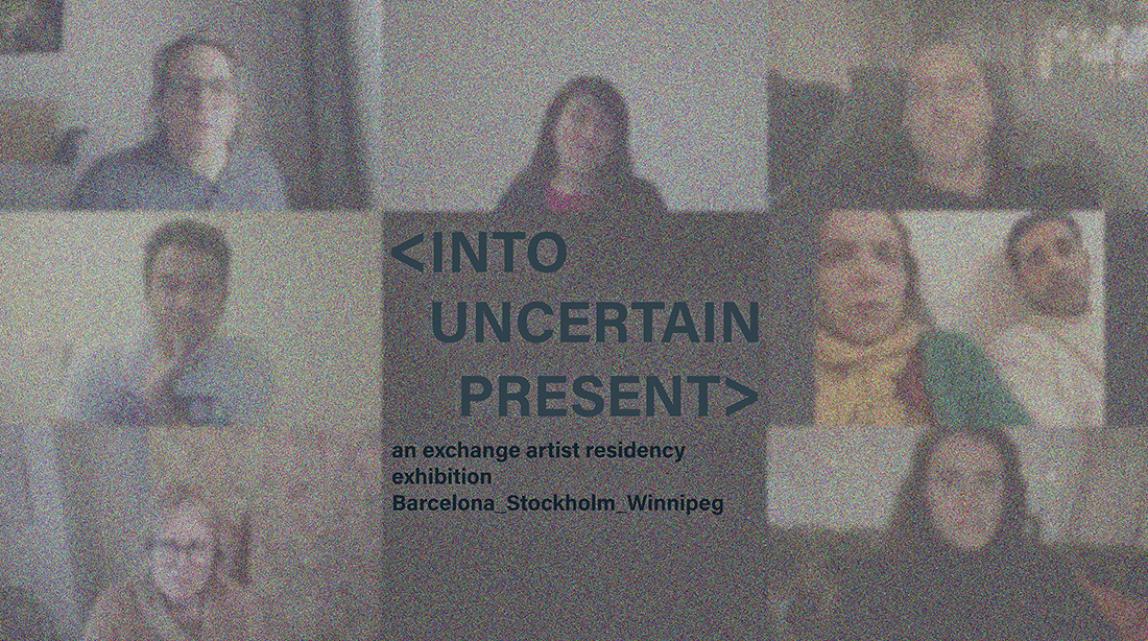
Troubled Home, Oily stories
Artist: Sepideh Karami
Guest curator: Maryam Omrani
How to tell decolonising stories of oil? How to re-connect to an environment from which we have been alienated by a long history of colonisation? How to re-exist beyond colonial logic?
In this exhibition, I tell the stories of oil through the lives of plankton, which are not only the origin of life but also the origin of extinction, of environmental crisis, of wars and conflicts due to their complicity in the production of oil and the high dependency on petroleum in the modern life. This exhibition wants to tell stories of plankton in order to reconcile with them and to find a way to re-exist beyond the colonial logic of modernity. "Sepideh Karami"
Oily Stories; Those Planktons is an artwork about hope and hopelessness. It is a story of colonizing communities and nature; ruination of homes; unsettling lifeforms, unearthing natural resources and stealing.
it refers to a specific geographical location and at the same time to an imaginative world of the undersea, a world of sea creatures, of the persistence of the planktons moving from one home to another, of hope for a better future although it might take millions of years.
Coming from an insecure region under the shadow of war and sanction, financial problems, the double colonization of the people by inside and outside powers, makes decolonising for the people of the Middle East a way of existence rather than just a theoretical investigation.
Troubled Home is a curatorial series that starts with oily stories of Sepideh Karami in All Art Now.
It starts from coming from a troubled home, country, and searching to find a place to belong and to heal what Edward Said called the ‘unhealable pain’. this series tries to find an imaginative home to live in, somewhere between spaces, somewhere homey in narratives and stories of our past and future.
Where are you from? (On being from somewhere)
Texe: Marianna Maruyama
Performance: Isabelle Ribe and Ninhursag Tataros
This event curated by Sona Stepanyan as a closing part of the exhibition "Tenderness of Unknown"
Marianna Maruyama's text "Where are you from? (On being from somewhere)" positions of power and privilege are embedded within this ‘normal’ dialogue, where in fact, a person’s relationship to a nation-state, their ethnicity, language, race, and religion are summoned. Subverting this question, volleying it back to the person asking, deliberately misunderstanding, or turning it into a joke (‘I’m from the Internet’ or ‘I’m from planet earth’) only arrest the conversation.
This essay was commissioned for the online exhibition Pandemos in 2020.
The reading will be performed in Swedish and English by Isabelle Ribe and Ninhursag Tataros.
Swedish translation by Lina Aastrup
Tenderness of the Unknown
Artists: Andrius Arutiunian - Aslan Goisum -Marianna Maruyama - Fatima Moallim
Curator: Sona Stepanyan
What do we look for when continually moving around, and what do we find when confined at home? Where is home, and what does it mean to be at home? "When we are home, we don't need to talk about it," writes Svetlana Boym, playwright and novelist.
By ridding us of what seemed familiar and moving us into a new landscape of the unknown, the pandemic has forced us to re-recognize our homes, habitats, neighbors, relationships, as well as slow down and challenge the aspirations that were allocated earlier: environmental awareness, inclusion, diversity, recreation and productivity balance.
In this uncertainty we have become a close-knit community defined not only by borders, territories, ethnicities, or identities but care and intimacy, that helps us to cope with the current crisis, moving from the isolated to the involved, the unaware to the responsive, the individual to the inclusive.
The tenderness is in sincerity, precision, recognition of strain, and a meticulously inquisitive conversation about it, viable in a trusting atmosphere of futures-oriented artist-curator dialogue and relationship.
Being autonomous, the works resonate and respond to friendships, precariousness, distance experiences, and cohesion. The participants indulge in reflections of what is shared, alienation overcome, lost images of the future, search for new rituals. By combining poetic essays, sonic letters, and films the works create new entry points and polyphonic scores for further communication.
Meeting of Minds/Karlstad
Venue//Konstframjandet Varmland//Karlstad_Sweden
Artisrs: Eden Mengisteab - Filippa Arrias - Helene Karlsson - Nisrine Boukhari - Sandi Hilal - Sara Falkstad
Curator: Abir Boukhari
Originally, the project was to take place in Karlstad at Konstframjandet Varmland as a public meeting and exhibition featuring six female artists.
Each artist planned to investigate feminist concepts in their artistic practice as well as the subject of migration.
Instead, due to the COVID-19 pandemic, the artists met virtually via Zoom.
During these meetings their discourse shifted towards the impact death, isolation, separation, and lockdown have had on the outcome of their artistic work.
As a result of these meetings, we produced short documentation where artists are sharing with you segments from Meeting of Minds.
Meeting of Minds/Karlstad
Artist: Eden Mengisteab - Filippa Arrias - Helene Karlsson - Nisrine Boukhari - Sandi Hilal - Sara Falkstad
Curated: Abir Boukhari
Originally, the project was to take place in Karlstad at Konstframjandet Varmland as a public meeting and exhibition featuring six female artists. Each artist planned to investigate feminist concepts in their artistic practice as well as the subject of migration. Instead, due to the COVID-19 pandemic, the artists met virtually via Zoom.
During these meetings their discourse shifted towards the impact death, isolation, separation, and lockdown have had on the outcome of their artistic work. As a result of these meetings, we produced short documentation where artists are sharing with you segments from Meeting of Minds.
AllArtNowLab window screening.
Artists: Loulou Cherinet - Valeria Montti Colque - Brad Downey - Juan Pedro Fabra Guemberena
Curated: Mia Zeeck
The air is tense. Loaded with vibrating friction. Like a remaining resonance from the streets, filled with echoes from uprisings and riots. Just like a silent deep breath. Ready to burst. Anytime, anywhere.
Social unrest is spreading across the world. Fuelled by the inactions of the world leaders concerning global warming, social injustices, and inequalities. Along with a pandemic that worsens these conditions, both economically, socially, and psychologically. Intensified by democratic restrictions and national repressions.
Borders, walls, and cages. Lockdowns. And brutal police force.
In increasing numbers, protesters take to the streets to give voice to their anger. Riot police answer with tear gas and rubber bullets. As tensions escalate, the violence continues to flare up. Global warming had set the forests on fire. And now, not only the forests were burning, but also the cities. State violence fuelled the flames. The whole world catches fire.
Fire, a radicalized and angry form of air.
Perhaps the scenery was new. The global scale of it. But not the story, nor the friction. That was all too familiar. A similar sense of tension is continuously present in the suburbs. In 1995 this was brilliantly captured in the French movie La Haine (The Hate). The film was inspired by the case of a 17-year-old Congolese, who was shot in the head by a policeman during interrogation, having been detained on suspicion of stealing cigarettes. This was one of three incidents involving killing unarmed young people by police officers that led to riots in Paris.
The movie pictured a suburb of Paris during an ongoing riot and brought poverty and social injustice to the forefront of public conversation. It exposed an unequal society by showing the ordinary life of three young men. Ignored, neglected, and alienated. Filled with rage against the police and a society that pushed them to the margins. The intro song by Bob Marley gives voice to the spirit of the movie.
I recall thinking back then that if nothing changed, it would only be a matter of time before the suburbs in Sweden caught fire in the same way.
Two decades later, the topic was as relevant as ever. This time I saw the film with my son. All of a sudden, he jumps up and cries out: Holy shit! I’m surprised. He is upset with a violent scene, yet he hardly reacted to all the previous ones. This one is totally different, he explains. The young men are arbitrarily arrested by the police and beaten during interrogation. I still don’t get his point. He clarifies: The police are supposed to protect you! For sure, I reply. But that does not apply to everyone.
Welcome to reality!
